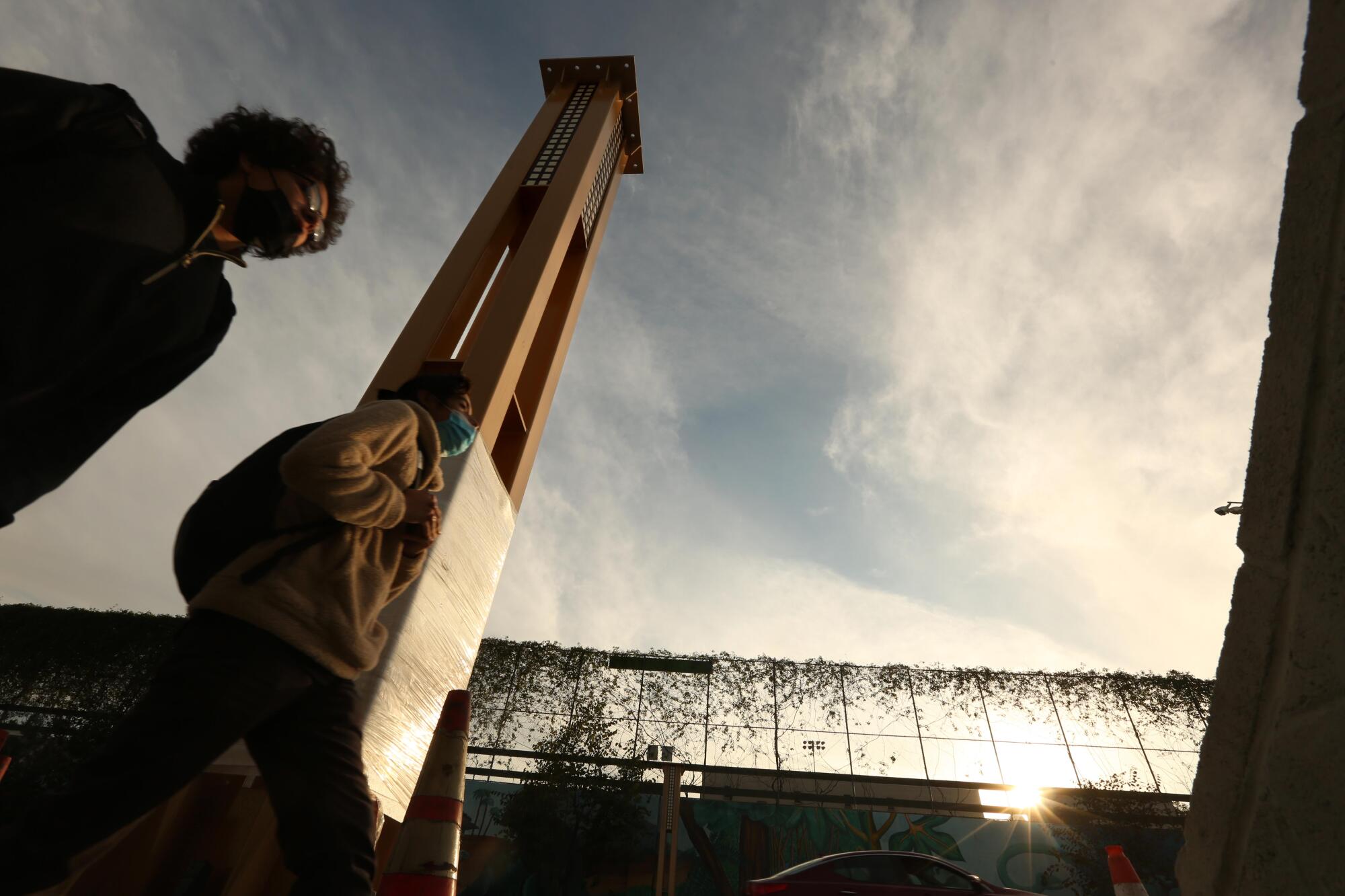
People come to Little Ongpin from as far as Las Vegas for lumpia, steamed pork buns, beef caldereta and other Filipino specialties.
But few of these loyal customers know that the restaurant is on the edge of a neighborhood called Historic Filipinotown.
“We have Koreatown, Chinatown, Little Tokyo, but in Filipinotown, nothing,” Beth Villago, whose mother opened the restaurant in 1980, said as she rang up meals and fielded phone orders.
That may soon change with the construction of an arch spanning Beverly Boulevard near the 1st Street Bridge, its foundation inlaid with oyster shell windows in a nod to a common feature of traditional homes in the Philippines.
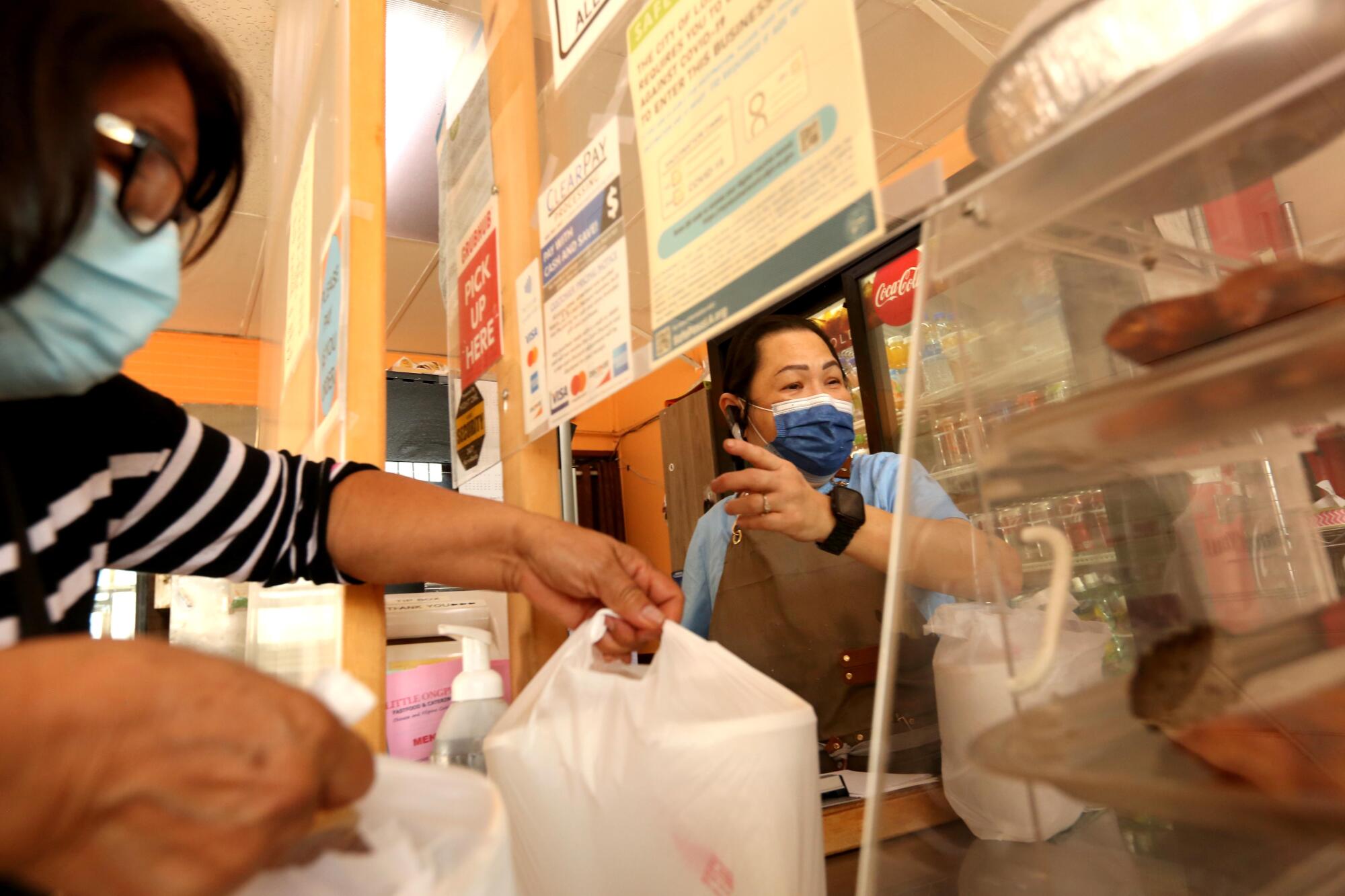
Filipino Americans are one of the largest Asian American groups in California, with 1.2 million residents, about half of whom call Greater Los Angeles home.
But they have never had the visibility of Chinese, Japanese or Koreans, whose distinctive neighborhoods and widespread culinary influence are long established.
Historic Filipinotown is easy to miss while driving down its main thoroughfares, Beverly Boulevard and Temple Street, just west of downtown Los Angeles.
Aside from Little Ongpin and a few other restaurants, there are no neon-signed clusters of Filipino businesses, no knots of tourists buying souvenirs and sampling the food.
The new arch will mark the eastern entrance to the neighborhood, much as the twin-dragon gate over Broadway welcomes visitors to Chinatown.
It will arrive at a moment when Filipino cuisine is finally being recognized by the gourmet dining world, earning Michelin stars. Filipino musicians such as Olivia Rodrigo, Saweetie and H.E.R. and politicians including California Atty. Gen. Rob Bonta are raising awareness about Filipino Americans.
As the neighborhood fights gentrification, Filipinotown leaders hope the arch will inspire greater engagement with city politics and with Filipino history, both for residents and for the larger Filipino American community.
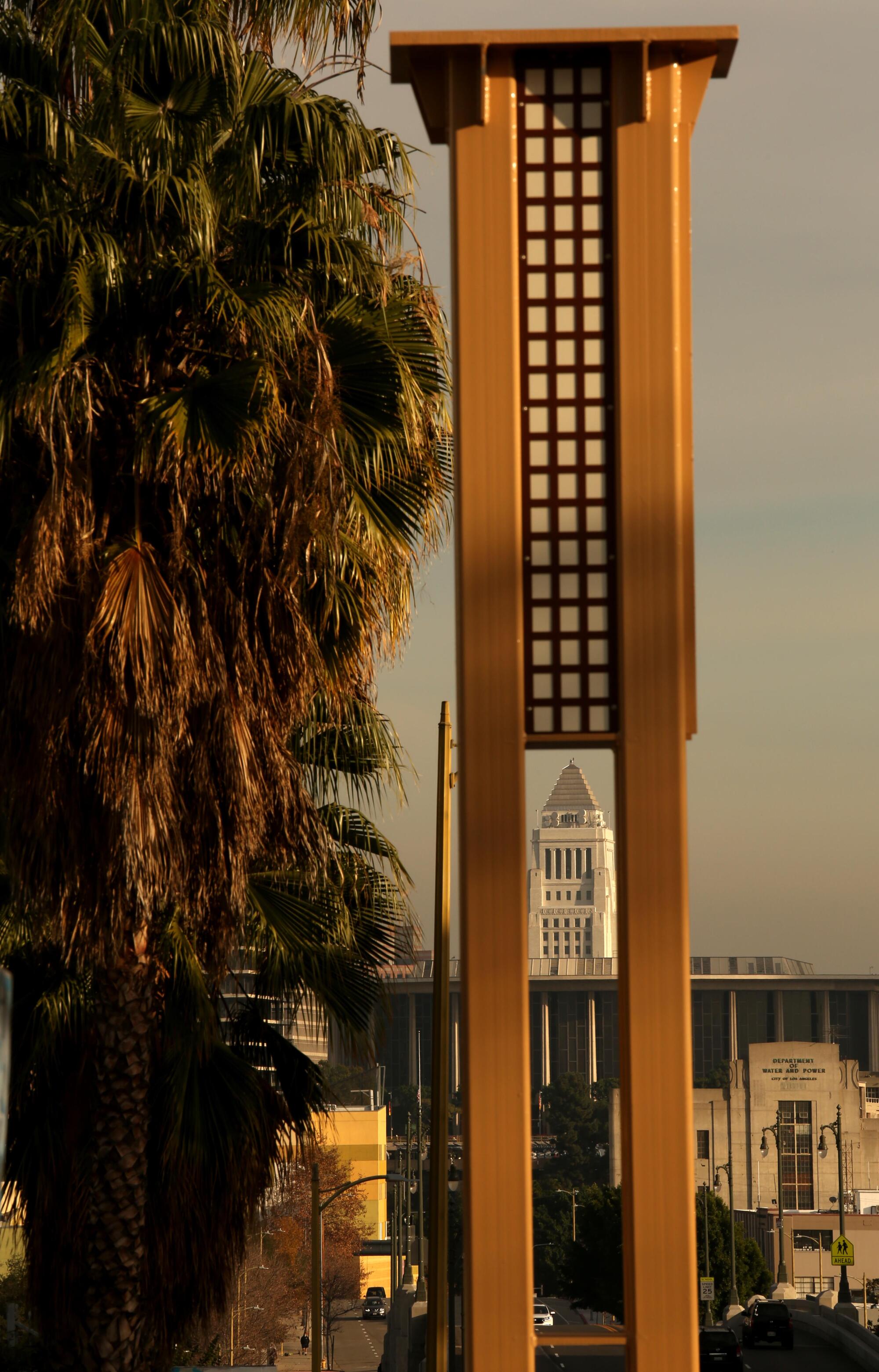
The arch, which will be completed this month, was spearheaded by Jessica Caloza, the first Filipina American on the Los Angeles Board of Public Works.
After she was appointed to the board in 2019, she wanted to act on the long-standing wishes of some fellow Filipino Americans to build a gateway arch on Historic Filipinotown’s eastern edge.
She flagged some money left over from construction of the Red Car pedestrian bridge spanning the L.A. River. Councilman Mitch O’Farrell, who represents the area, also came up with some money from his office’s budget for the $587,000 project.
“I feel proud, and I hope the community ultimately feels proud, because it’s for them,” said Caloza, who moved to the U.S. from the Philippines as a young child.
The arch, titled “Talang Gabay: Our Guiding Star,” was designed by artist Eliseo Silva, who wanted to illustrate for Filipino Americans the narratives absent in history lessons they learned at school.
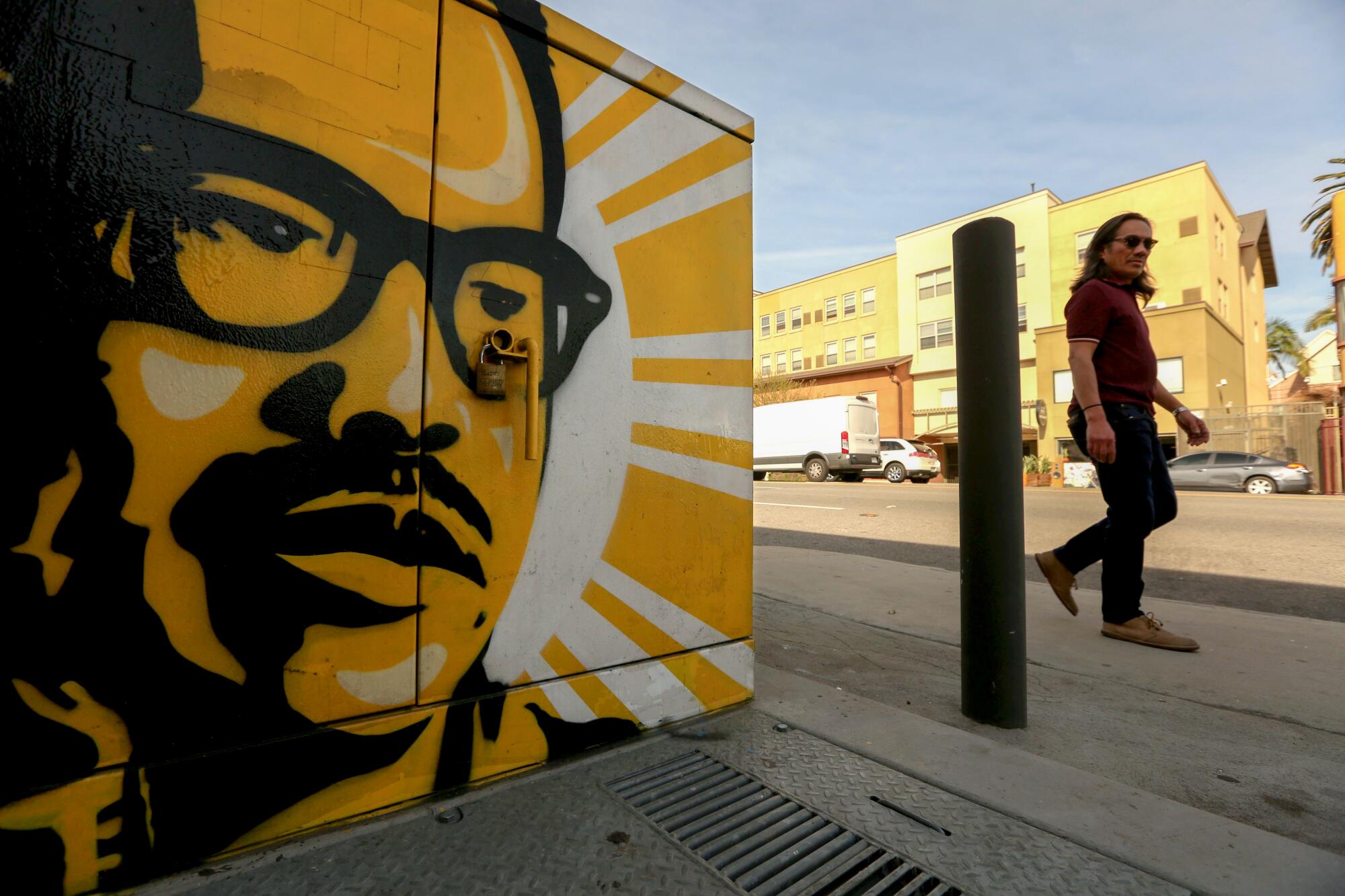
Much of the symbolism Silva included in the arch predates the Spanish and American colonization of the Philippines, from a shape that echoes precolonial palaces to roofing and beams that resemble traditional homes on stilts.
The arch is topped with ancient mythological figures, including the sarimanok, a bird that guides the harvest seasons, and the naga, a serpent-like dragon associated with lunar and solar eclipses.
Silva is known for the “Gintong Kasaysayan” mural in Filipinotown, which depicts a timeline of events in the Philippines and the U.S., including the 1965 Delano grape strike.
Many Filipino immigrants work long hours, not only providing for their families in the U.S. but sending money home to relatives in the Philippines. Sometimes, that doesn’t leave much time to pass Filipino culture on to the next generation, Silva said.
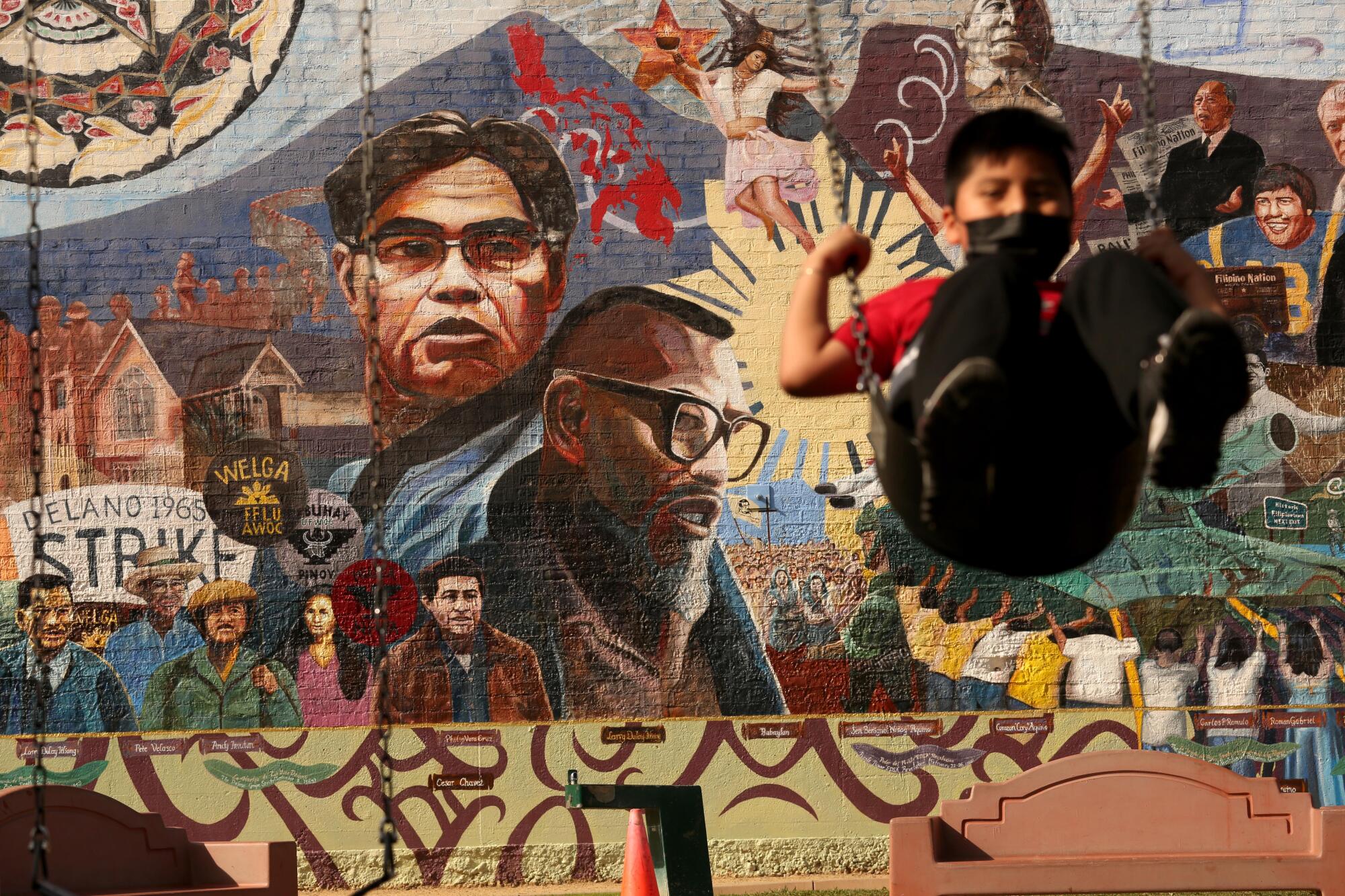
“Until we do that, we actually are not yet part of America,” said Silva, who recently moved back to the Philippines after decades in Southern California. “We’re not living to live, we’re living to work.”
In the coming weeks, two pillars that were erected on both sides of Beverly Boulevard months ago will be joined across the four-lane thoroughfare to make the 30-foot-long, 82-foot-wide steel arch.
The arch will contain a QR code for an online walking tour highlighting the neighborhood’s cultural landmarks.
Filipino Americans settled in the area after being displaced from their original neighborhood, called Little Manila, on Bunker Hill in downtown L.A. to make way for massive redevelopment projects such as the 101 and 110 Freeways.
Gerald Gubatan’s father was one of the Filipino Americans forced to move west from Bunker Hill after World War II. At the time, restrictive racial covenants limited where Filipinos could live.
Signs such as “No Filipinos or Dogs Allowed” and “Positively No Filipinos Allowed” were a common sight, according to a city report that Gubatan, an urban planner, helped write.
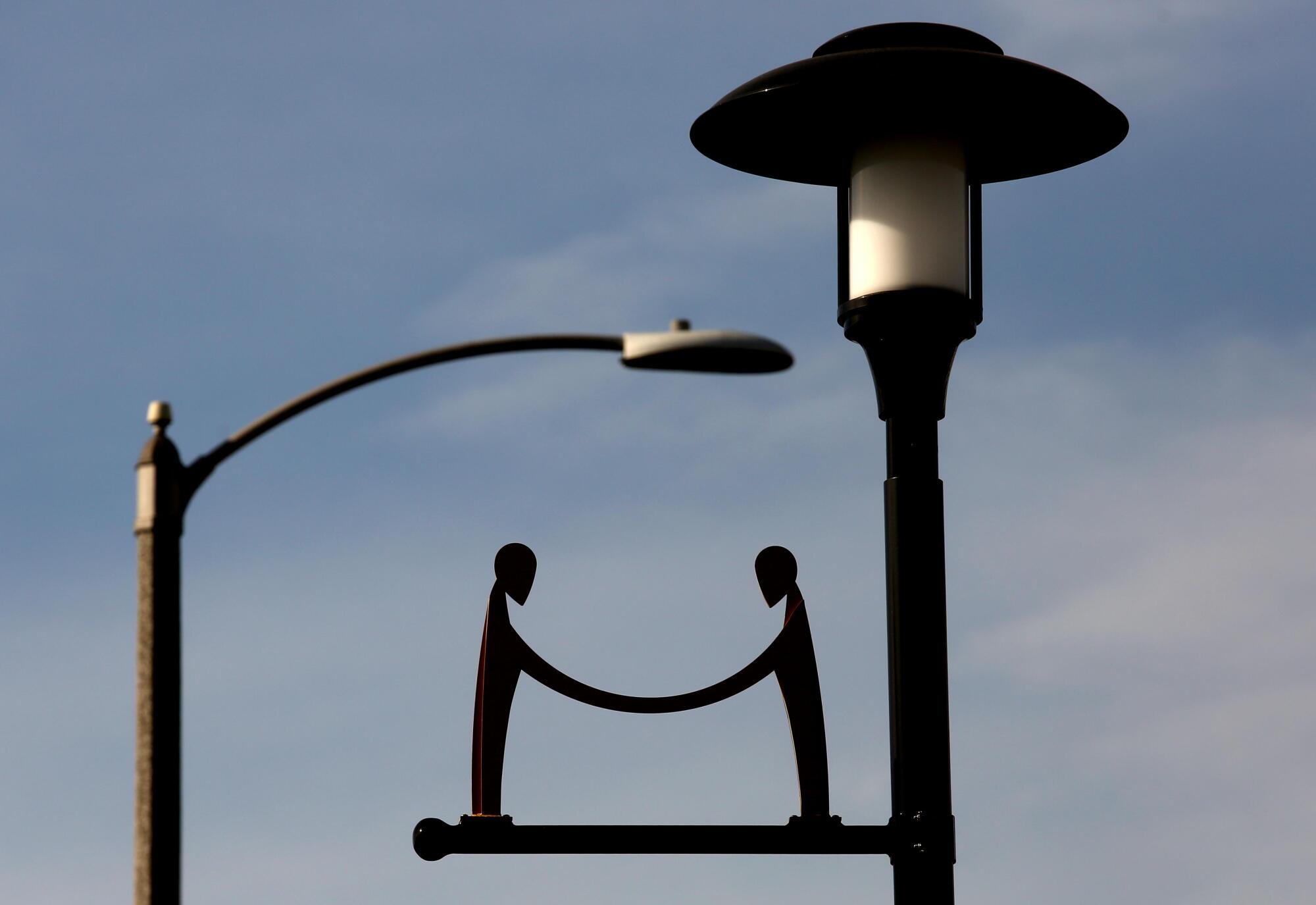
“In my mind, symbolically, it connects ... Little Manila with the community that was displaced westward to Historic Filipinotown,” Gubatan said of the gateway arch, which points east toward the original neighborhood.
Gubatan, 60, grew up in Historic Filipinotown and moved to Burbank in the 1990s, a choice made by many upwardly mobile Filipinos.
Others fanned out to L.A. neighborhoods including Eagle Rock and Panorama City, as well as suburban cities such as Carson and West Covina.
Historic Filipinotown is now majority Latino, with a Filipino American population of about 15%. Even so, it remains an important commercial and cultural center for Filipinos across the region.
When Gubatan moved back to the neighborhood in 2012, he was shocked by how much it had changed.
He and others fear that gentrification will do to Historic Filipinotown what postwar public works projects did to Little Manila.
In a city of rising real estate prices, Filipinotown’s location near gentrified, trendy neighborhoods such as Echo Park and Silver Lake make it a prime target for new development. Luxury apartments are sprouting where strip malls once stood and where working-class Filipino families once lived.
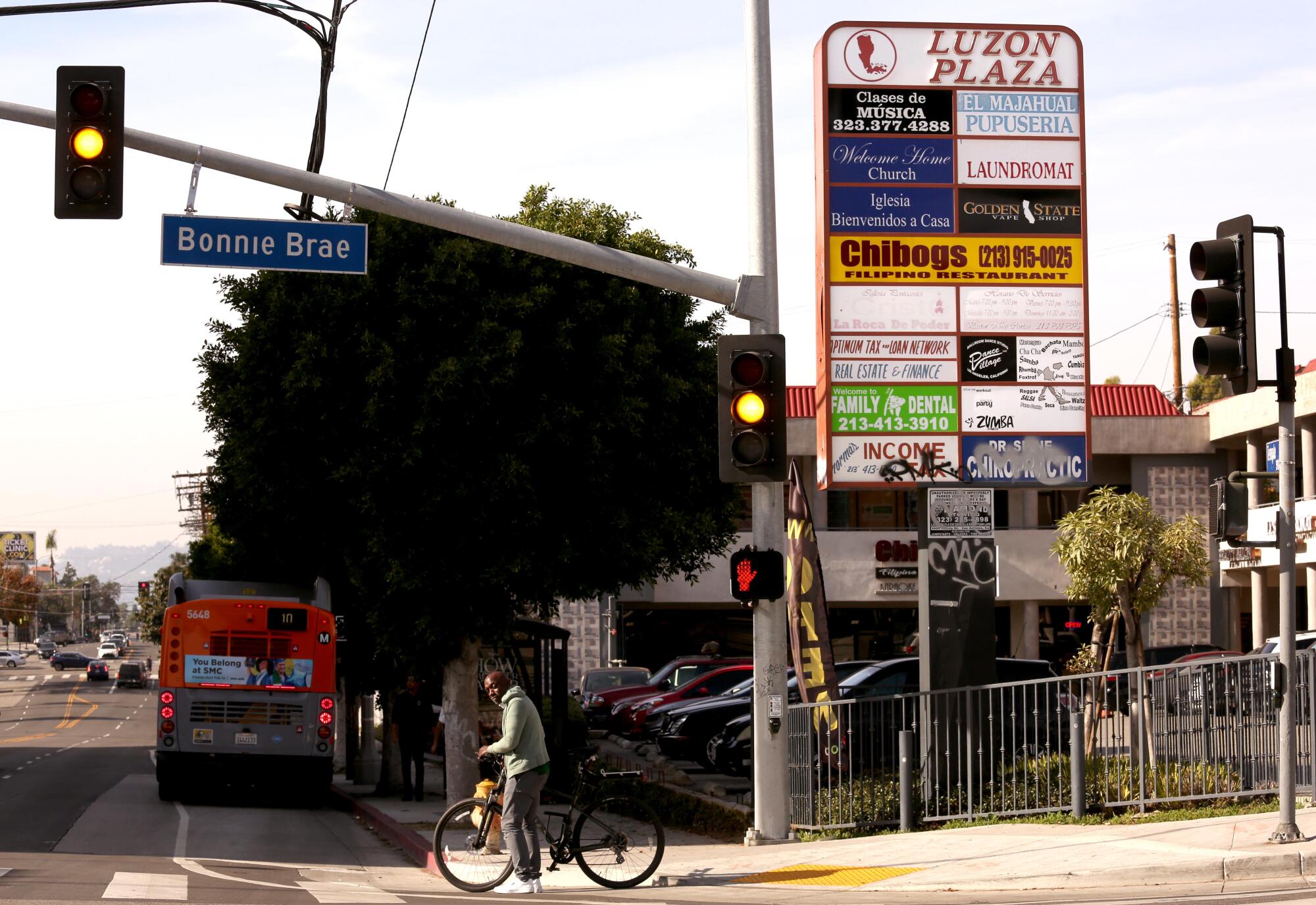
Luzon Plaza, a strip mall on Temple Street, was developed in the 1970s by community advocates aiming to boost Filipino businesses.
Through the years, the businesses in the strip mall have helped feed, dress, heal and educate Filipino Angelenos.
The Filipino restaurant, karaoke bar, beauty salon, tax services office and dental clinic still operating there will soon be demolished for a five-story apartment complex with mostly luxury units.
Four other large luxury apartment projects are also going up along Temple Street.
For the record:
11:16 a.m. March 2, 2022A previous version of this post identified Joseph Bernardo as a professor at Loyola Marymount University; he is an adjunct professor.
Joseph Bernardo, an adjunct professor at Loyola Marymount University who researches Filipino American history in Los Angeles, is part of a coalition that opposes gentrification in the neighborhood.
“Having the gateway is good,” said Bernardo, a lifelong Northridge resident. “But what’s going to happen here with Luzon Plaza? Where’s the policy that addresses gentrification in the neighborhood?”
Joselyn Geaga-Rosenthal has seen many of her Filipino neighbors move away or die in recent years. Their homes were then sold to developers, she said.
A longtime Historic Filipinotown resident and community leader, Geaga-Rosenthal was part of the campaign that gave the neighborhood its name in 2002.

Her mother, Remy V. Geaga, who co-founded the Filipino American Service Group, is honored at Temple and Alvarado streets. “Remy V. Geaga Square, Fearless Filipino-American Community Leader,” signs at the intersection say.
Geaga-Rosenthal is on the planning committee for the arch and sees it as an important part of fighting gentrification.
The arch will give a new generation of Filipino Americans a better understanding of their culture and history, which may motivate them to fight for the neighborhood, she said.
But it was hard to come up with a design that represents all things about Filipinos — just as it was hard to encapsulate her mother in a few signs.
“I guess we aren’t there yet ... where we’re recognized, that our story is known, and so we feel like we have to tell our whole story in a square inch of art,” she said.
The planning committee consisted of community leaders such as Geaga-Rosenthal and the heads of local Filipino organizations.
But some have complained that process wasn’t inclusive enough. Other projects, such as the lampposts along Temple Street decorated with Filipino sun medallions, incorporated public input in the design process.
Some have also objected to the arch’s depiction of a “parol” — a star-shaped lantern displayed by Filipinos during the Christmas season — because of its associations with Spanish and American colonialism. Others had hoped the arch would reckon more with the American colonial presence in the Philippines, which drove many Filipinos to immigrate to the U.S.
Dulce Capadocia, a dance artist and choreographer who grew up in Historic Filipinotown and lived there until recently, said she is pleased the neighborhood is getting such a large monument. But she wonders why the project didn’t include more community members and artists.
“What would this have been like if this were a collaborative project, if more people were involved — maybe a team of artists to make this more equitable?” Capadocia said.
Joseph Cipriano lives in Historic Filipinotown, across the street from a memorial to Filipino and Filipino American World War II veterans.
He moved to L.A. from the Philippines in 2018 to join his mother, settling in the neighborhood because of the affordable rent and the many Filipino immigrants.
Dollar Hits, a buffet-style restaurant on Temple Street serving Filipino street food, is one of his favorite hangouts.
“There’s a lot of Filipinos here,” Cipriano said. “We’re just comfortable having Filipino neighbors.”
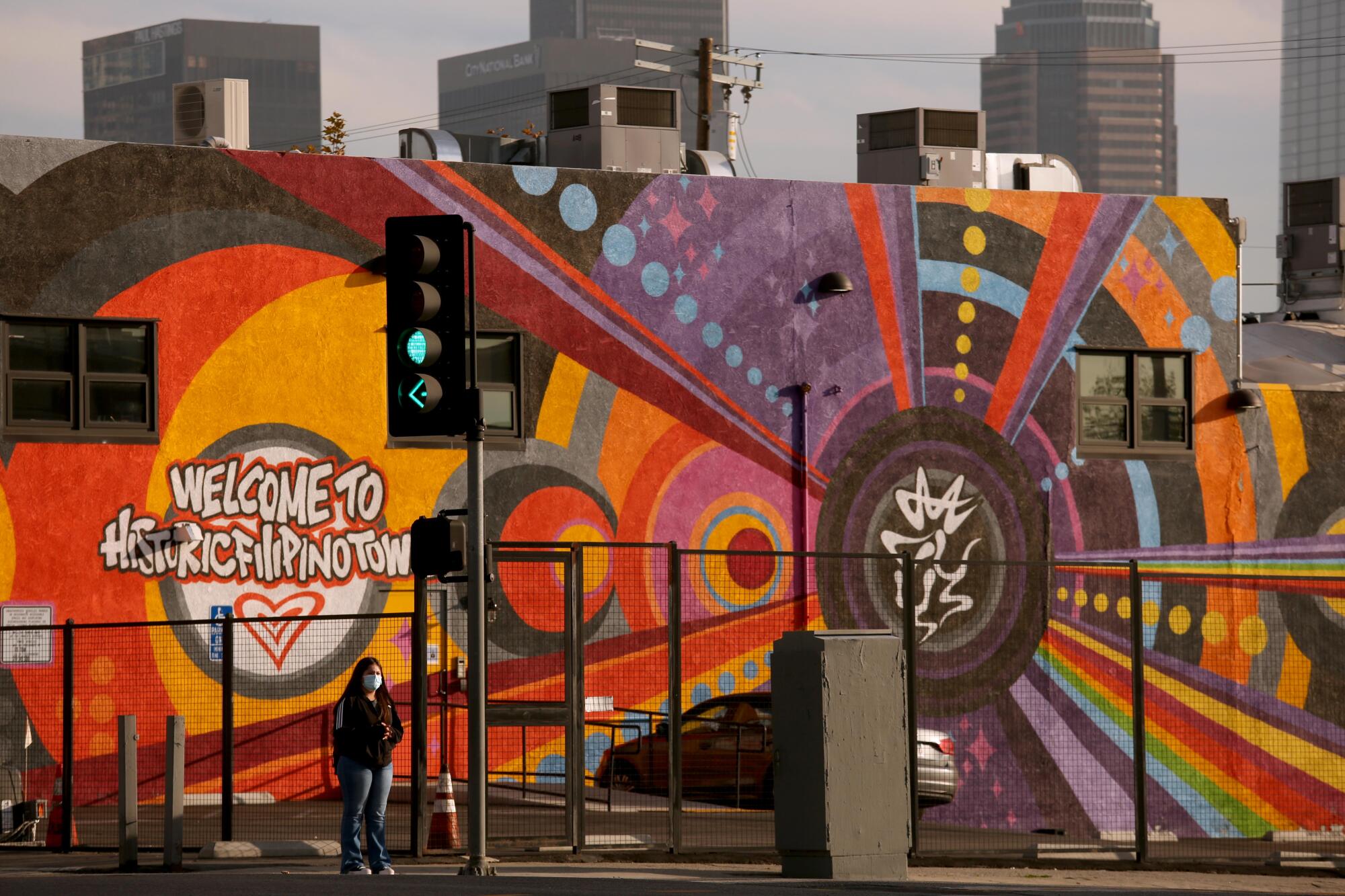
He is proud of the World War II monument. But because he works so much, putting in 80 hours a week as a certified nursing assistant at a nearby convalescent home, he said he has had little time to think about the new arch.
Cipriano is also worried about his rent, which keeps going up, and the new luxury apartments on his street.
“It’s just too expensive — those new ones,” he said, pointing toward the luxury complexes.
More to Read
Sign up for Essential California
The most important California stories and recommendations in your inbox every morning.
You may occasionally receive promotional content from the Los Angeles Times.












